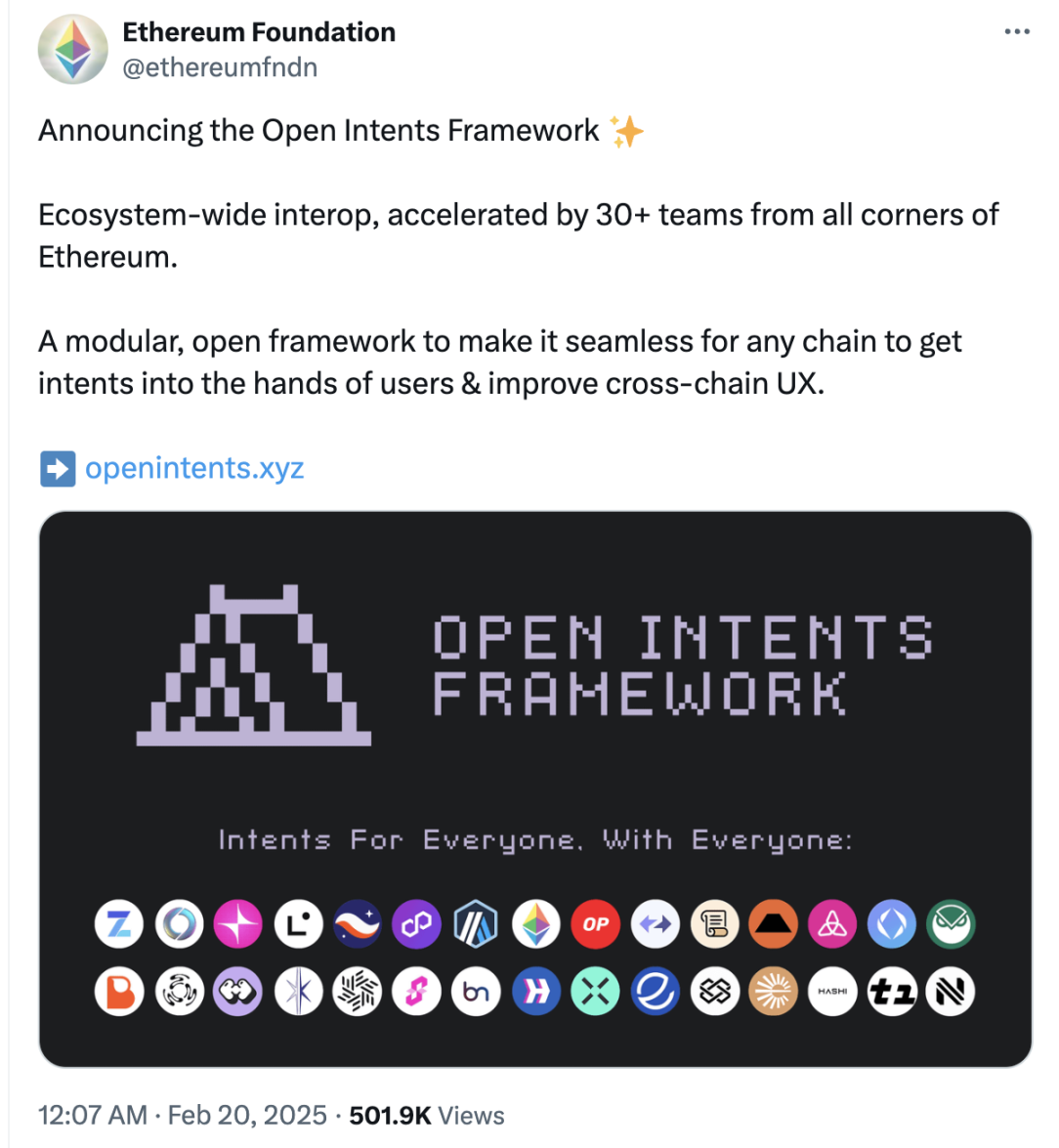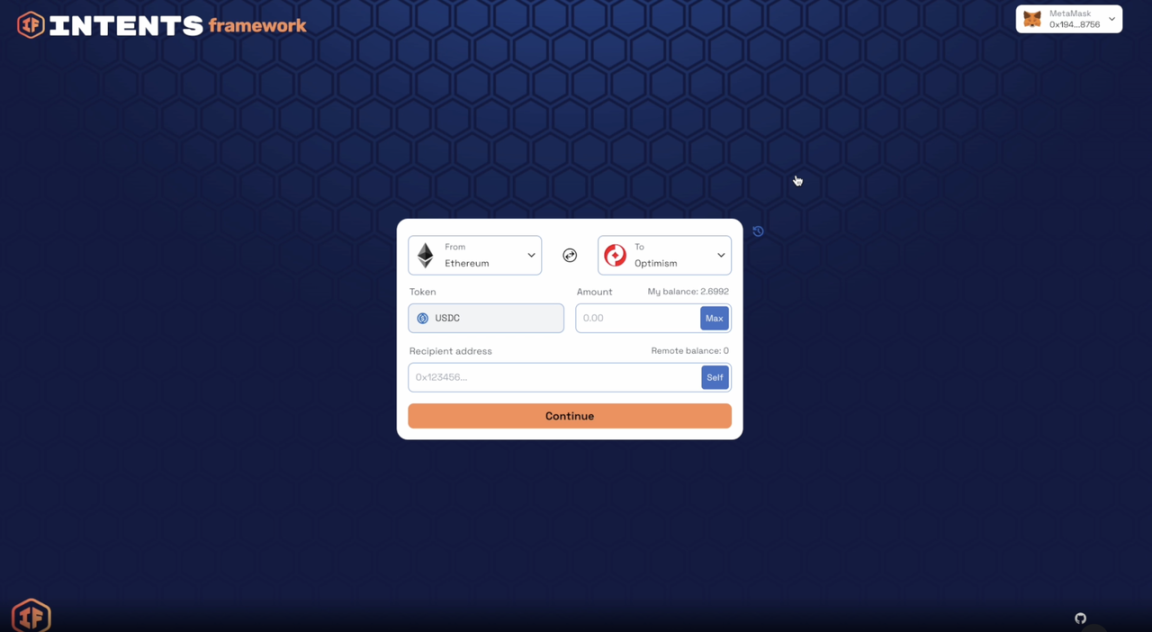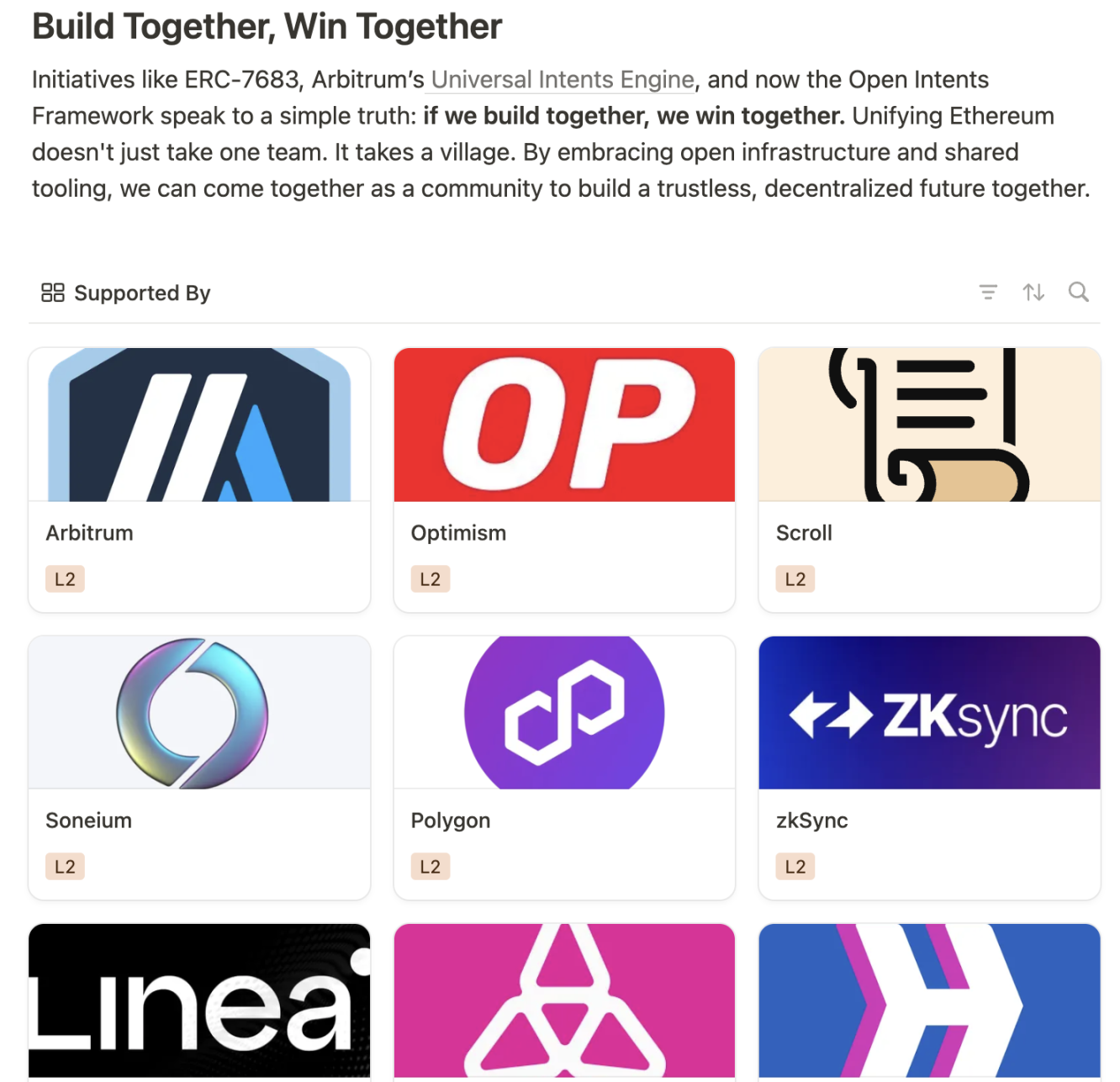Quick look at the Open Intents framework: Will the Ethereum ecological liquidity situation end?

Reprinted from panewslab
02/20/2025·3MAuthor: Alex Liu, Foresight News
The Dilemma of Intent Paradigm and the Open Intents Framework
In the process of Ethereum moving towards a multi-chain future, users shuttle through DeFi, social, AI and other scenarios in Layer2 networks such as Arbitrum, Base, and Mode, but they are also troubled by complex and inefficient cross-chain operations. This split experience has spawned the rise of the "Intents" paradigm - users only need to declare their goals (such as "redeem 100 USDC on the Base chain to 100 USDT on the Arbitrum chain") and are provided by professional solvers (Solver) ) Automatically complete complex processes such as path planning and transaction settlement. However, the high technical threshold for building an intention system, difficulty in liquidity management, and weak ecological cooperation have always restricted the scale of this paradigm.

The birth of the Open Intents Framework is the collective response of the Ethereum community to this challenge. This open source framework jointly initiated by the Ethereum Foundation, Hyperlane and Bootnode, takes "modular" and "community co-building" as the core, attempting to transform the intentional infrastructure from a closed "island" to an open "Lego building block" .
Deconstructing the intention stack: From remake wheels to plug and play
Traditional intent protocols require the construction of full-stack technologies such as smart contracts, solvers, settlement layers from scratch, and developers are often trapped in the quagmire of repeated development. Open Intents Framework breaks the deadlock with three modular tools:
ERC-7683 Standard Reference Implementation
As a common language for cross-chain intent, ERC-7683 defines standardized interfaces for intent creation, execution and settlement, and has been supported by community leaders such as Vitalik Buterin. This framework not only provides the open source reference code of ERC-7683, but also complements the mainnet contract of Across Protocol, ensuring that developers can flexibly innovate under unified standards.
" Programmability" of the solver
The built-in TypeScript solver of the framework provides common cross-protocol indexing, transaction submission and liquidity rebalancing functions, which developers can quickly customize exclusive solution logic based on this. For example, Eco Protocol is adapting it as the official solver of Eco Routes, while Everclear injects automated rebalancing capabilities into it to reduce liquidity management costs.
" Building Block Assembly" of Smart Contract
From basic limit order exchanges to Hyperlane ISM-enabled settlement mechanisms, the framework's pre-installed smart contract library allows developers to combine on demand. In the future, Arbitrum broadcasting standards, RRC-7755 storage proofs and other solutions can be accessed as modules to achieve diversified evolution of the intent settlement layer.

Intent Frame Front-end UI Example
Community Resonance: Co-evolution from Tools to Ecology
The Open Intents Framework's ambitions go beyond technical tools, it attempts to activate a "collective experiment of the ecology of intentions":
Open collaboration of solver network
Platforms such as Khalani plan to connect decentralized solvers into shared networks, while Uniswap's The Compact protocol explores the combination of intention and resource locking. These innovations can be quickly integrated through the framework to form a solution capability covering the entire chain.
Diversity experiments on settlement layer
Developers can freely choose Hashi's oracle aggregator, Espresso's confirmation layer or Optimism's superchain's native interoperability solution as settlement modules to find the optimal solution between security and efficiency.
Seamless connection of user experience
Applications such as Superbridge have tried to embed framework modules into the front-end interface. In the future, wallets and DApps only need to call standardized interfaces to provide users with a "one-click cross-chain" silky experience.
Co-constructor Declaration: Sewing multi-chain world with open agreement
When Arbitrum launched the general intention engine, Base Experiment RRC-7755 standard, and Open Intents Framework open source modular tools, the Ethereum community is responding to the biggest proposition in the multi-chain era with "open collaboration": How to make users unable to perceive the existence of chains?
The answer to this question may be hidden in the underlying design of the framework - it does not try to define a single technical path, but reduces collaboration costs through standardized interfaces, allowing developers to focus on differentiated innovation. As his declaration says, “If constructed together, victory will be made together.”

Currently, the code base of Open Intents Framework is open on GitHub and the audit work will be completed in the first quarter of 2025. Whether it is exploring new order logic (such as cross-chain Dutch auction), trying liquidity management solutions, or adding intent functions to existing protocols, developers can join this open source experiment and weave Ethereum with more than 30 ecological teams. Seamless future.
There are no lone heroes on the road to "single-chain experience", but the power of open agreements will eventually make the multi-chain world arriving at the same time.

